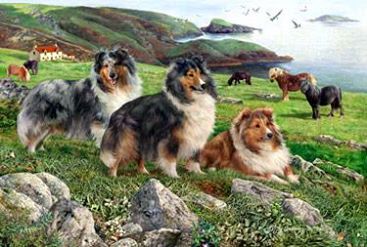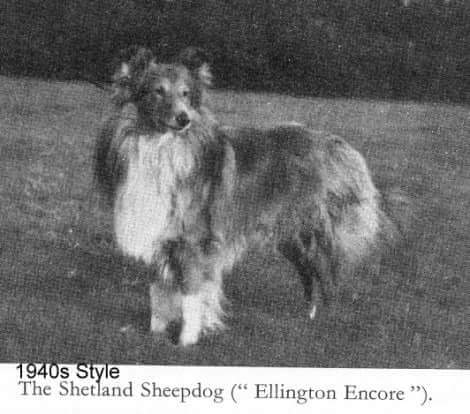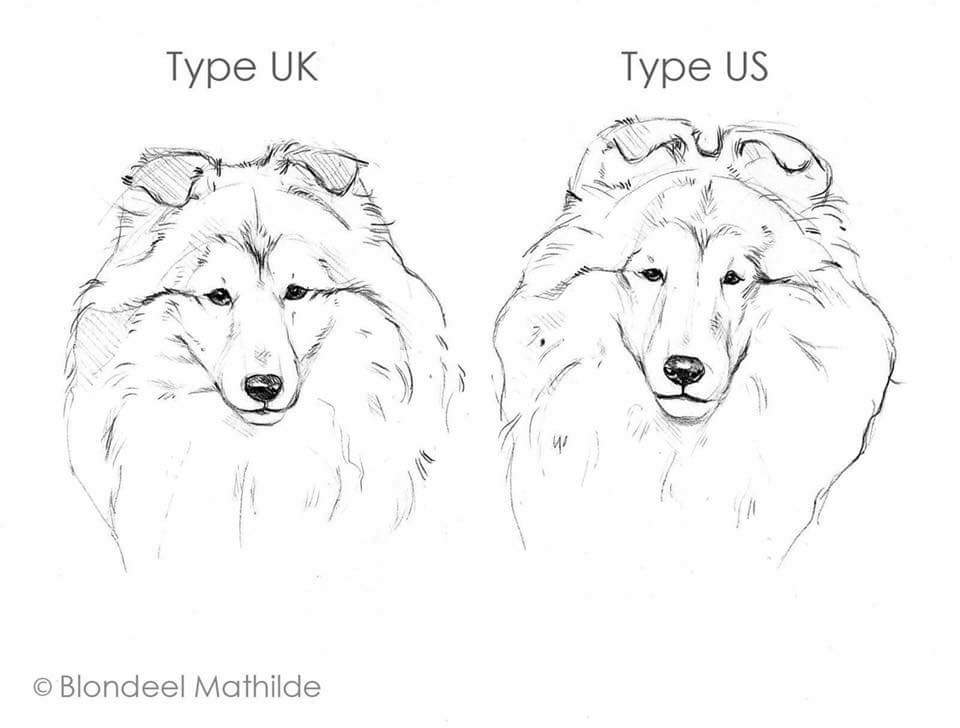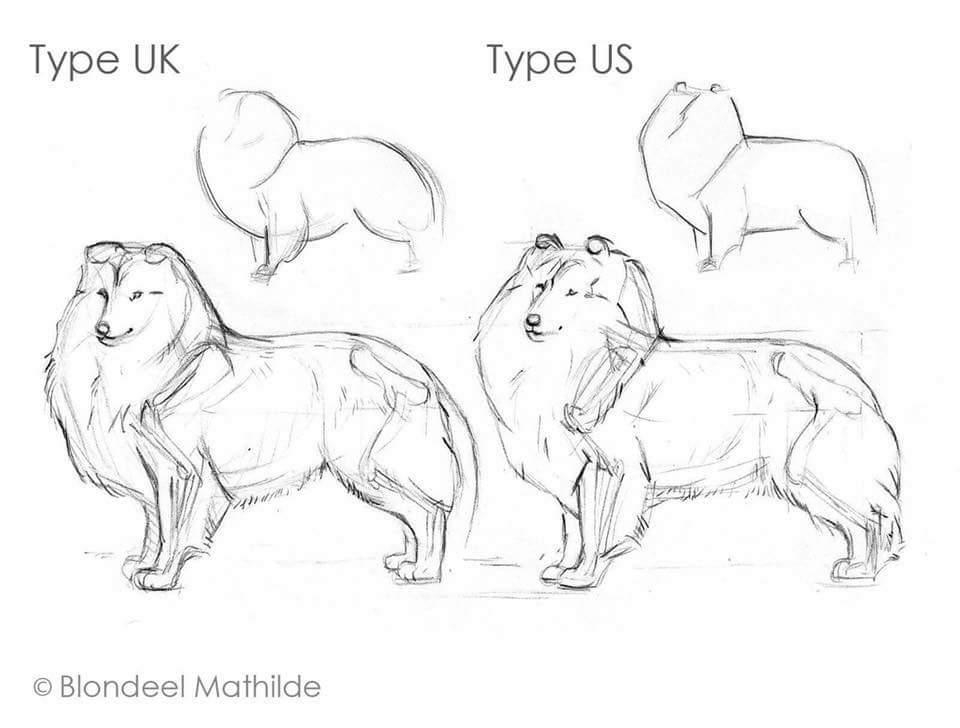The Breed
The breed was recognized in 1914 by the Kennel Club as “shetland sheepdog” or “sheltie”.
The name derives from the homonymous Shetland Islands, separated from Scotland only by a few miles of sea. The Shetland was born from crosses between the Rough Collie and small local dogs called “the whalers”, but also Spaniel and Spitz.
General appearance

Small, long-haired working dog of great beauty, free from cloddiness and coarseness, action lithe and graceful.
Outline symmetrical so that no part appears out of proportion to whole. Abundant coat, mane and frill, shapeliness of head and sweetness of expression combine to present the ideal.
Smart, intelligent, strong and active.
Affectionate and open with its owners, reserved with strangers, never nervous.

Shetlands are wonderful dogs! They love being an active part of the family. They are a very social breed with both the canine and human group.
They are intelligent and versatile breed, infact they need families that will provide regular exercise and mental stimulation, such as tricks, games of problem solving, excursions and frequent walks.
However, each dog is an individual, so some will be quieter and “lazy” while others very lively, active and energetic.
They are herding dogs, of small size, but working dogs, let us not be deceived by their beauty, they are not (only) pet!
They are suitable for many activities such as agility, obedience, rally obedience, research, dog dance, pet therapy (with the right work and selection of the breeder) and sheepdog of course.
It should not surprise us that they need stimulation and companionship!
They are gentle enough to live with cats and other small animals, but may try to herd your other pets if given the chance.
FAQ
Is the shetland sheepdog suitable for you?
GENETIC TESTS AND OTHER EXAMS OF SHETLANDS
 Genetic tests cost, you have to take a blood sample and send it to a specialized laboratory, often abroad.
Genetic tests cost, you have to take a blood sample and send it to a specialized laboratory, often abroad.
So it is not enough for the breeder to tell you “the parents have been tested and are fine”, you must pretend to see the paper of the exams. Ask a lot before so you can understand any cheating.
A serious breeder, always has all the papers and documents ready to be shown.
Genetic tests
- CEA (collie eye anomaly): genetic abnormality affecting the eyes, which may not create any kind of problem in certain cases, lead to a vision impairment in others or in the worst case complete blindness.
- MDR1 (Multi Drug Reactivity 1): is a gene that, under normal conditions, encodes a particular protein (P-glycoprotein) that eliminates unwanted substances from cells (and from the central nervous system). In case of anomalies, this protein does not work, it follows an accumulation of toxic substances. Dogs with this type of pathology are hypersensitive to some active ingredients that are usually found in products against fleas and similar, anesthetics and medicine.
X-Ray
HD (Hip Dysplasia): radiography of hip dysplasia. To be performed approximately at 1 year old (or later).
Eye examination
Must be done at an early age within 8 weeks old. It must then be repeated in adults, especially in case of reproduction. The visit in early age is very important as with the growth the eye completes the development and the pigmentation therefore as adults could “hide” pathologies that are instead clearly visible at few weeks of life. The visit must be carried out by a veterinary specialist in ophthalmology who issues a certificate with European significance.
There are other checks that can be performed: genetic tests for DM, VWD3, CNGA1-PRA in addition to the elbow radiography (ED elbow dysplasia) and the check of patella luxation (PL patella)
Warning!!In Italy, none of these checks / exams is a must to do a litter of sheltie and unfortunately bad breeder can also breed due brother/sister or match wrong colour like sable x blue merle.
Each breeder independently chooses if and what to test according to their own ethics.
In 2015 I created this group on Facebook for all italian sheltie lovers
https://www.facebook.com/groups/sheltieitaly/
the aim of the group is to learn aout the breed, share informations, photos and videos.
AMERICAN LINE VS ENGLISH LINE
It is a good idea to choose which line you like best: there are breeders of only English lines, there are those only American/Canadian lines and those mix lines.
Fillory kennel has shelties of Engligh type.
The Shetland Sheepdog standard belongs to the English Kennel Club because the breed originated in GB.
The English Kennel Club “grants” its standard to the FCI and the FCI standard is what we have to follow.
Attention should be drawn to the fact that the last variation of the standard was implemented by the FCI in 2013 to underline the differences between the Shetland Sheepdog and the American Shetland Sheepdog.


